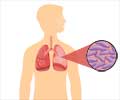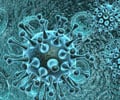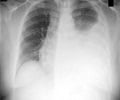
Most individuals with TB recover from the initial infection and become asymptomatic, but the bacterium persists for years, surviving largely inside macrophages, a type of cell that resides in the immune system.
This presents a public health problem in that TB can reactivate and cause serious disease or death. Researchers and physicians know the body's immune system is capable of containing the infection but not curing it completely. It begs the question: How does the organism survive in the human immune system for so many years?"
For the past 15 years, Drs. Clifford Harding and W. Henry Boom of Case Western Reserve have been seeking the answer to this question. Their work indicated that MTB can inhibit the ability of macrophages to stimulate infection-fighting immune responses, and they identified that a protein on macrophages called Toll-like receptor 2 (TLR2) is involved in this immune evasion mechanism.
TLR2 seems to be a two-edged sword in the complex immune response to MTB, as it helps some immunity mechanisms and inhibits others. Understanding the balance of these effects and the role of TLR2 may provide insights to design therapies for TB.
"Understanding how MTB interacts with the immune system and how it can both activate and inhibit the immune response is critically important for the design of the next generation of TB vaccines. The persistence of infection is dependent on MTB's ability to manipulate our immune system to its advantage. The paradox here is that the MTB molecule, LprG, stimulates TLR2, one of the major receptors we have to identify disease-causing microorganisms. In this case, too much stimulation through TLR2 actually favors MTB by causing parts of the immune response to shut down," said W. Henry Boom, MD, professor of medicine and director of the Tuberculosis Research Unit at Case Western Reserve School of Medicine.
Advertisement
This dual mechanism may drive stronger regulation of immune responses by MTB, and future vaccine development may be enhanced by designing approaches to use such mechanisms.
Advertisement
The development of new antibiotics is an increasingly important goal, since resistance to existing antibiotics is becoming widespread.
Source-ANI

